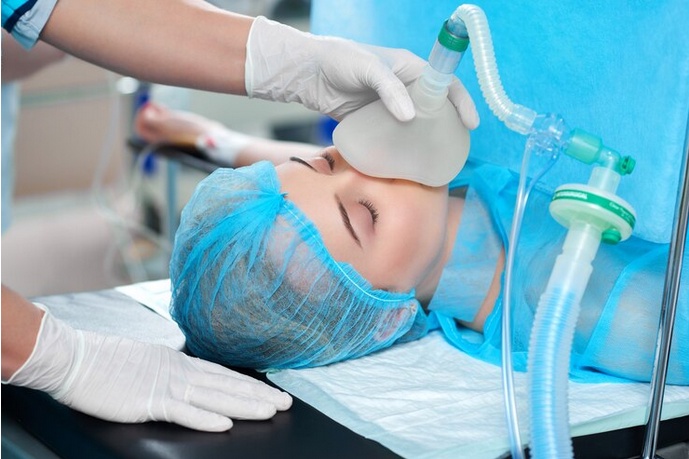Introduction:
Sleep apnea is a common sleep disorder that can significantly impact one's quality of life. While various treatment options exist, sleep apnea jaw surgery has emerged as a comprehensive solution for those seeking a long-term remedy. This guide explores the intricacies of sleep apnea jaw surgery, shedding light on the procedure, its benefits, and considerations for individuals contemplating this transformative intervention.
Understanding Sleep Apnea Jaw Surgery:
Sleep apnea jaw surgery, also known as maxillomandibular advancement (MMA) surgery, is a surgical procedure designed to address obstructive sleep apnea (OSA), a condition characterized by the recurrent collapse of the upper airway during sleep. The surgery involves repositioning the upper and lower jaw to create more space for the airway, reducing the risk of obstruction and alleviating the symptoms of sleep apnea.
Benefits of Sleep Apnea Jaw Surgery:
-
Improved Airway Patency: The primary goal of sleep apnea jaw surgery is to enhance the patency of the upper airway. By repositioning the jaws forward, the surgery creates more space at the back of the throat, reducing the likelihood of airway collapse during sleep. This can lead to improved airflow and a significant reduction in apnea episodes.
-
Reduction in Snoring: Snoring is a common symptom of sleep apnea and can be disruptive for both the affected individual and their sleep partner. Sleep apnea jaw surgery often results in a notable reduction or elimination of snoring, contributing to a quieter and more restful sleep environment.
-
Enhanced Quality of Sleep: By addressing the root cause of sleep apnea, jaw surgery can significantly enhance the overall quality of sleep. Improved breathing during the night promotes deeper, more restorative sleep, reducing daytime fatigue and enhancing daytime alertness.
-
Long-Term Solution: Sleep apnea jaw surgery is considered a long-term solution for obstructive sleep apnea. While other treatments such as continuous positive airway pressure (CPAP) therapy are effective, they require ongoing compliance. Jaw surgery, when successful, provides lasting relief without the need for nightly interventions.
The Sleep Apnea Jaw Surgery Process:
-
Comprehensive Evaluation: Before recommending sleep apnea jaw surgery, a comprehensive evaluation is conducted. This includes a thorough examination of the patient's medical history, sleep patterns, and severity of sleep apnea. Diagnostic tests such as polysomnography (sleep study) may be performed to assess the extent of the condition.
-
Surgical Planning: Based on the evaluation, the surgeon develops a customized surgical plan. This plan outlines the specific adjustments needed for the upper and lower jaw to optimize the airway. Three-dimensional imaging and virtual surgical planning may be utilized to enhance the precision of the procedure.
-
The Surgical Procedure: Sleep apnea jaw surgery is typically performed in a hospital setting under general anesthesia. The surgeon carefully repositions the upper and lower jaws forward, securing them in the new position with plates and screws. This advancement enlarges the upper airway and reduces the likelihood of obstruction during sleep.
-
Recovery and Post-Operative Care: Following surgery, a period of recovery is essential. Patients may experience swelling, discomfort, and changes in diet during the initial healing phase. Post-operative care, including pain management and follow-up appointments, is crucial to monitor progress and address any concerns.
Considerations for Sleep Apnea Jaw Surgery:
-
Severity of Sleep Apnea: The severity of sleep apnea is a crucial consideration in determining the appropriateness of jaw surgery. While it is effective for moderate to severe cases, less invasive treatments may be explored for mild cases.
-
Alternative Treatments: Before opting for jaw surgery, individuals are often encouraged to explore alternative treatments, such as CPAP therapy or oral appliances. These less invasive options may be suitable for some patients and are considered first-line treatments in certain situations.
-
Patient Commitment: Successful outcomes from sleep apnea jaw surgery require commitment from the patient. Adherence to post-operative care instructions, including dietary restrictions and follow-up appointments, is essential for optimal healing and long-term results.
Conclusion:
In conclusion, sleep apnea jaw surgery stands as a comprehensive and effective solution for individuals grappling with the challenges of obstructive sleep apnea. By addressing the root cause of the condition and providing lasting relief, jaw surgery has the potential to transform the quality of sleep and overall well-being. As individuals consider this surgical intervention, it is imperative to undergo a thorough evaluation, understand the procedural aspects, and commit to post-operative care. With advancements in surgical techniques and a focus on individualized treatment plans, sleep apnea jaw surgery continues to be a promising avenue for silencing the snores and restoring restful, rejuvenating sleep.


No comments yet